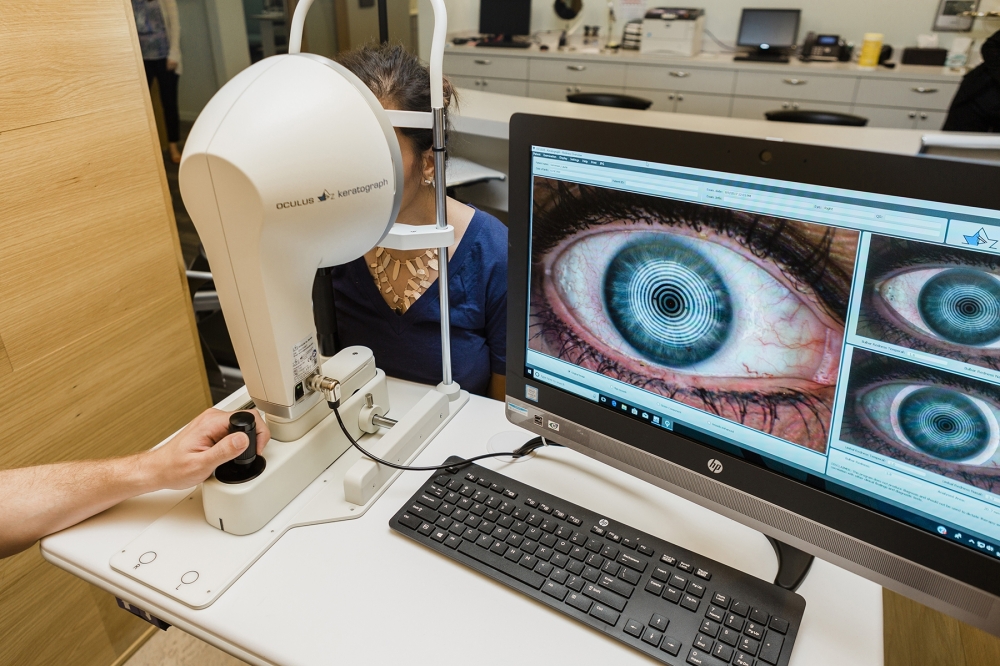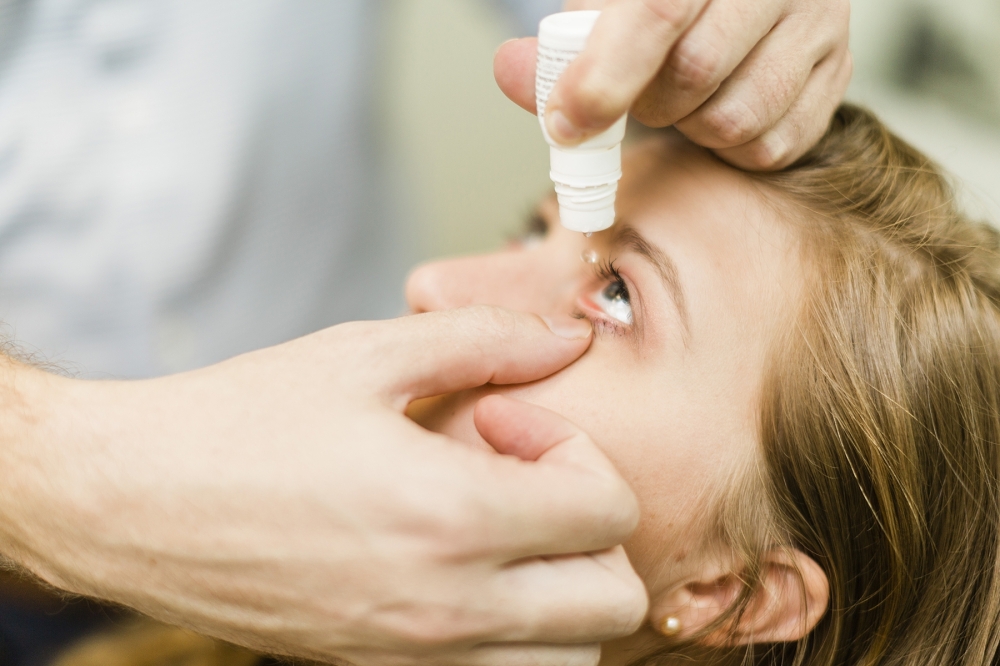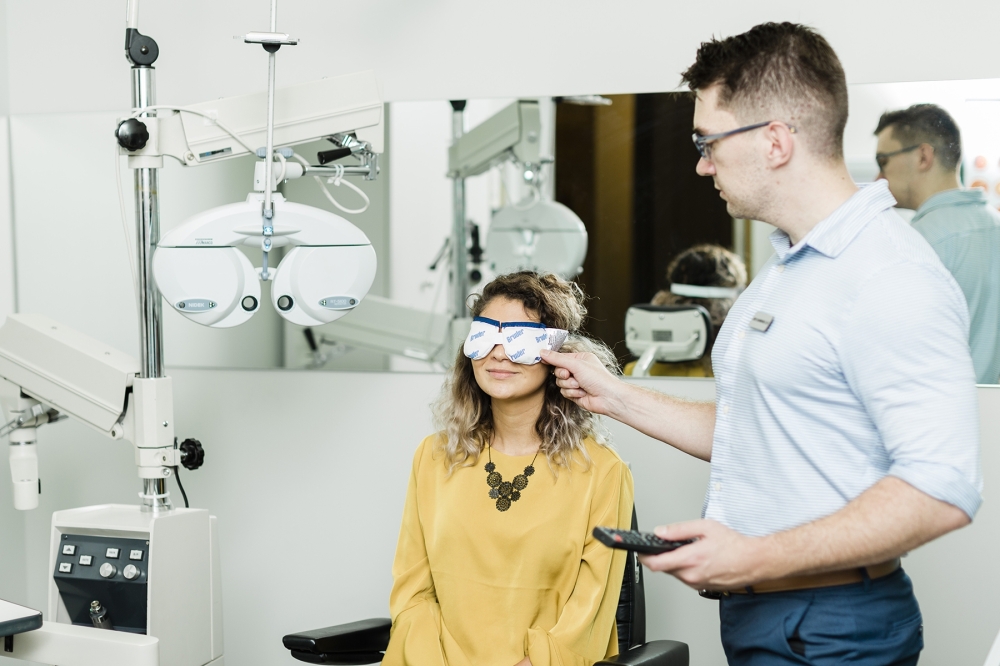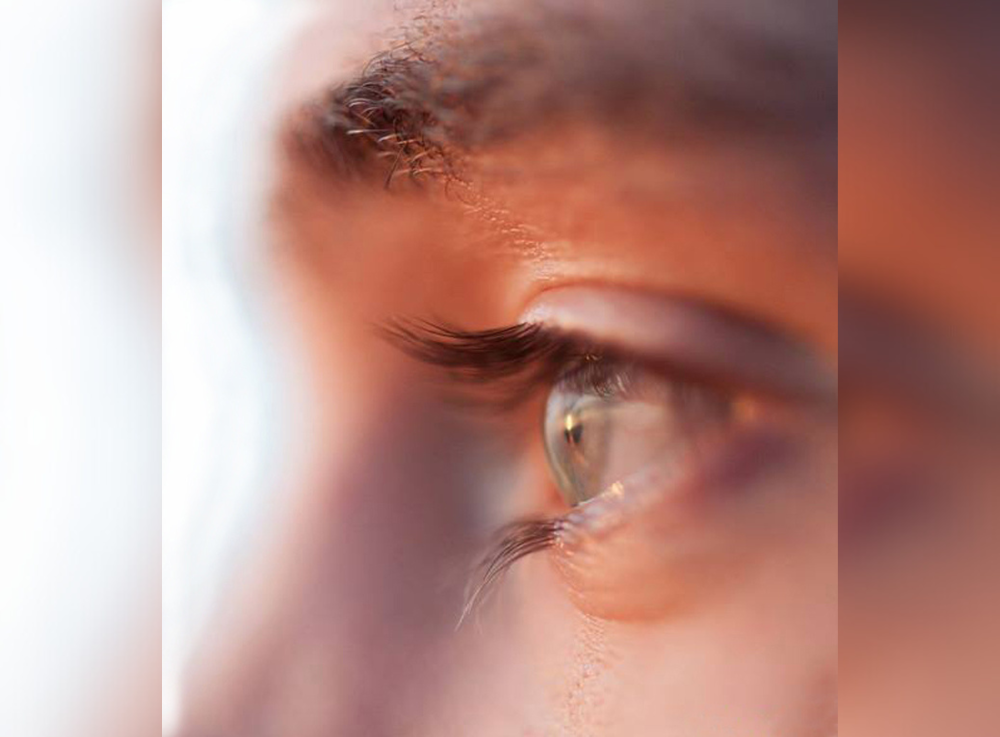“Dry eye can be caused by so many different things,” said Dr. Kiannah, a dry eye specialist at Lakeline Vision Source. “It can be diet related, screen time related or a lot of other aspects including hormones, certain systemic conditions, and your environment. The most common has definitely become the computer-related dry eye. ... I would probably say about 80% of my patients have a type of computer-related dry eye.”
Here are five important things Dr. Kiannah wishes more people knew about dry eye.
1. Your phone or laptop might be the reason your eyes burn or sting.
Digital devices make our lives more efficient, but they’re not doing our eyes any favors.
“With all this introduction of technology, our eyes are converging more, ... and with all of this digital light, we are actually not blinking as much as we should,” Dr. Kiannah said. “The action of blinking actually releases oils from our eyelids into the tears.”
These oils are essential. Without them, the tears evaporate too quickly, leading to discomfort, excessive tearing, irritation and even intermittent blurry vision.
“When we’re not blinking, those oils get stuck in our eyelids, so we can have small clogs in the glands inside the eyelids,” Dr. Kiannah said. “Two things can happen. We can have excessive tearing because those tears do not have enough oils to stick onto the surface of the eye. We can also have a feeling of dry eye, burning or stinging every time we blink.”

2. You might have dry eye even if you don’t feel it.
One of the most surprising things about dry eye is how often it goes unnoticed.
“Dry eye is definitely a spectrum,” Dr. Kiannah said. “There’s dry eye that the patient feels, and it’s not too bad, but the doctor might see structural changes. Then, there’s the complete opposite side. The patient could feel absolutely nothing.”
That’s why annual exams matter. Lakeline Vision Source uses high-powered microscopes to detect subtle changes in the front surface of the eye, sometimes before symptoms arise.
“People may have dry eye, whether they know it or not, and whether they feel it or not,” she said. “We have to act quickly because we don’t want patients to, No. 1, feel pain, and No. 2, have those structural permanent changes that we can’t bring back.”
3. Warm compresses and screen breaks really do help.
If dry eye is caught early, simple home therapies may be enough to stop it from progressing.
“I usually like to start on the ground floor, with treatments that are easier to do at home,” Dr. Kiannah said. “If that solves the issue, that’s perfect.”
Her top recommendations include using warm compresses to unclog the oil glands in the eyelids and taking frequent screen breaks to allow the eyes to rest and rehydrate.
“I recommend that patients take a break once an hour. It doesn’t have to be very long; they should just turn away from the screen, look as far away as they can and really blink,” she said. “It helps get those tears back on the surface of the eye.”
Artificial tears may also help temporarily, though Dr. Kiannah cautions they’re not a long-term fix.
“It’s almost like a Band-Aid,” she said. “It’s helping in that immediate moment, ... but it’s not fixing the problem.”

4. There are powerful in-office treatments for fast relief.
For patients with more advanced cases or those who need faster results, Lakeline Vision Source offers innovative, in-office dry eye therapies.
“We have three different therapies: ... IPL, which is intense pulse laser, ... radio frequency ... and low level light therapy,” Dr. Kiannah said.
IPL was originally developed in dermatology and helps reduce inflammation deep in the oil glands. However, there are limitations depending on a patient’s skin tone. To expand accessibility, Lakeline Vision Source is offering radio frequency treatment, which is a game-changer.
“[Radio frequency] is our newest treatment,” Dr. Kiannah said. “It uses sound waves to break up any clogs in the oil glands. I experienced it myself last week. It works [immediately]. I could feel the oils melting and those clogs going away.”
Patients usually undergo a series of four treatments spaced over several weeks and often see long-lasting improvement.
5. Even kids are developing dry eye from screen time.
Due to the rise of digital learning, Dr. Kiannah has seen younger patients walk in with symptoms more common in adults.
“I treated a patient who was in middle school,” she said. “She previously tried at-home eye mask therapy, ... but it wasn’t quite strong enough.”
After a full course of in-office treatment, the results were striking.
“It helped her out so much with her glasses prescription. At first, it would vary. Some days she'd see clearly, and some days her vision was blurry. [After the treatment], it stayed nice and stable,” Dr. Kiannah said. “It also improved her quality of life with how she’s learning and playing.”

When to seek help
Burning, stinging, intermittent blurry vision and even excessive tearing can all be signs of dry eye.
Environmental factors such as weather, wind or allergens can play a role, but if symptoms persist, it’s time to see a professional.
“If you’re feeling or seeing anything out of the ordinary, ... jot some notes down, and let us know if it’s constant or intermittent," Dr. Kiannah said. “It’s always something we look for in an annual exam, but if nothing’s working [at home], definitely come in for an evaluation.”
Find relief from dry eye at Lakeline Vision Source.
Whether your symptoms are new, persistent or barely noticeable, the team at Lakeline Vision Source is here to help. With advanced diagnostics, in-office treatments and personalized care from experts such as Dr. Kiannah, you don’t have to live with discomfort.
Click here to schedule your dry eye evaluation today at Lakeline Vision Source, or call 512-918-3937 to speak with a team member.

The above story was produced by Multi Platform Journalist Sydney Heller with Community Impact's Storytelling team with information solely provided by the local business as part of their "sponsored content" purchase through our advertising team.






